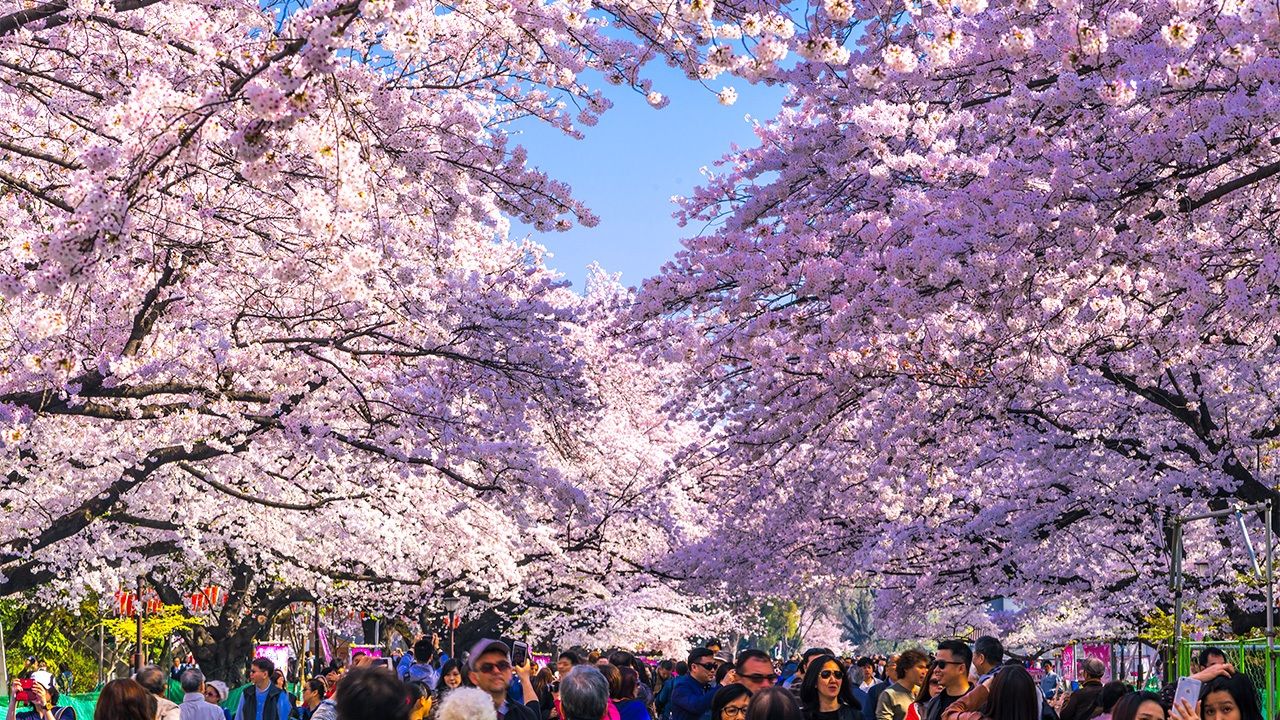
“Hanami”: A Springtime Symphony of Blossoms
Science Culture- English
- 日本語
- 简体字
- 繁體字
- Français
- Español
- العربية
- Русский
Enjoying springtime cherry blossoms is a Japanese cultural practice that enthralls people all over the world today. Many travelers, in fact, flock to Japan to take part in hanami. To learn why hanami became a widespread custom, it helps to know that its origins are connected to the wild cherry trees growing in various parts of Japan and the history of flower viewing.

People of all ages enjoying hanami in Tokyo’s Shinjuku Gyoen.
Harbingers of Spring
Sakura, or flowering cherry, is the generic name for various species of broadleaf deciduous trees of the genus Cerasus, with over 100 species growing mainly in temperate zones in the northern hemisphere. Cerasus avium was planted all over the world and is one of the best-known species, but many wild species grow mainly in eastern Asia. Some experts classify sakura under the genus Prunus together with the plum (Prunus domestica), but the genera Cerasus and Prunus have clear structural differences, which researchers have confirmed through molecular phylogenetics analysis of DNA in the past few years. Here I will discuss sakura as a member of the genus Cerasus.
Japan has ten species of wild cherry trees, among which yama-zakura (Japanese mountain cherry, C. jamasakura) and edohigan (spring cherry, C. itosakura) probably date back to the prehistoric age when humans began populating the Japanese archipelago. Yama-zakura is common throughout central to western Japan, covering hilly terrain near human habitation, and since it flowers earlier than other trees, it stands out on the hills in spring. In some areas, like Mount Yoshino in Nara Prefecture, sakura have been blooming and delighting the eye for over a thousand years.
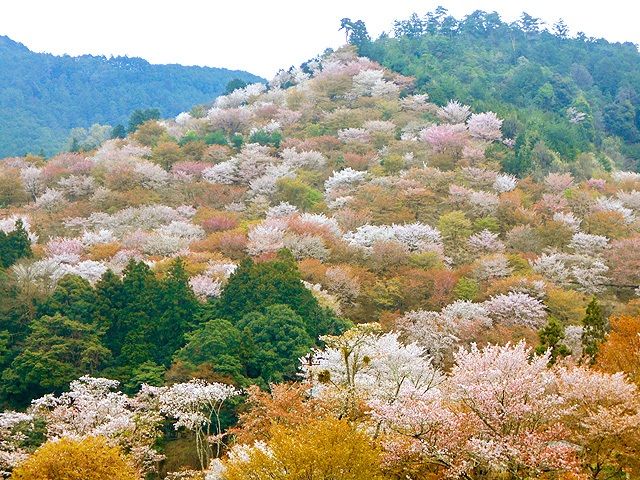
Mount Yoshino, Nara Prefecture, filled with blooming yamazakura.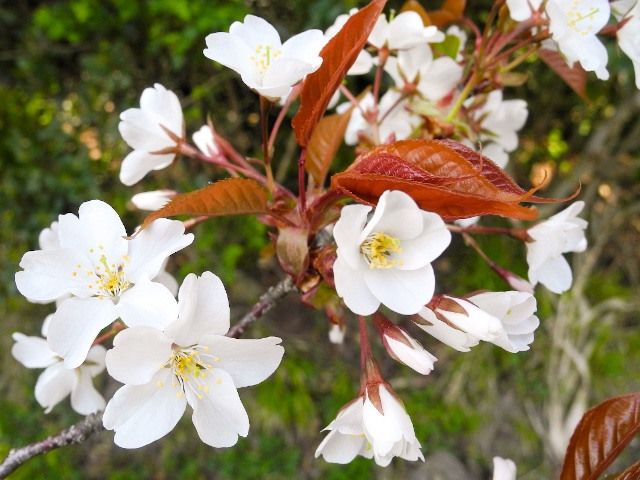
The white petals of the yamazakura contrast beautifully with the tree’s tender, young red leaves.
Edohigan, on the other hand, is rarely found in mountain areas but blooms earlier than yamazakura, making its pink flowers all the more eye-catching and breathtaking in their beauty. Edohigan also grow to prodigious heights, sometimes reaching 30 meters, and can have a girth of 2 meters, making many of these huge trees tourist attractions in their own right. Although neither species produces edible fruit, ancient people may have naturally gravitated to these beautiful trees and enjoyed viewing their flowers.
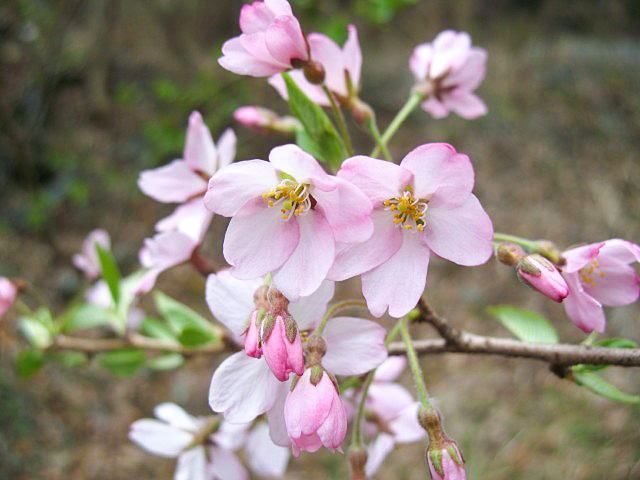 Edohigan blossoms. The leaves remain short, allowing a good view of the tree’s pink flowers.
Edohigan blossoms. The leaves remain short, allowing a good view of the tree’s pink flowers.
From Refined Pastime to Popular Leisure Activity
Hanami began in Japan in the eighth century, during the Nara period (710–94), when kyokusui no utage became a courtly pastime. In this amusement, participants would compose and recite poems while seated beside a stream, taking drinks from sake cups before sending them floating down the stream to the next person. These parties traditionally took place on the third day of the third month of the lunisolar calendar, a date corresponding to early April today. This early spring pastime, held in the gardens of the Imperial court and the aristocracy, had its origins in China. At that time the flowering trees admired for their beauty were ume (Japanese plum, P. mume) or momo (peach, P. persica), which had originally been introduced to Japan from China. Thus, in the eighth century, the blossoms that nobles admired in spring were not sakura: hanami celebrating flowering cherry trees only came later.
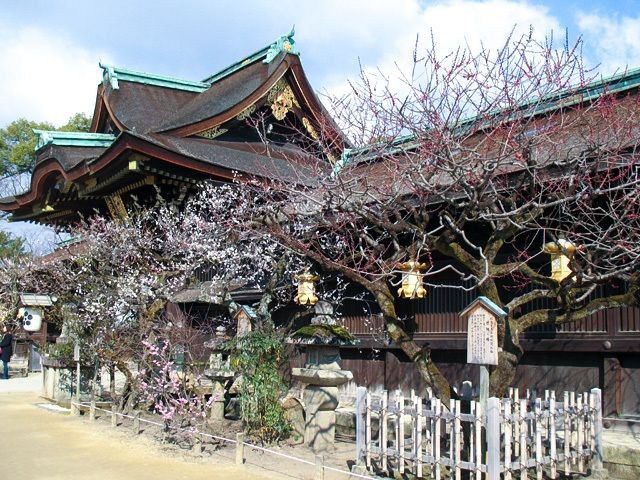 Ume in bloom at Kitano Tenmangū in Kyoto. Prior to the Heian period, ume were the representative flower of spring.
Ume in bloom at Kitano Tenmangū in Kyoto. Prior to the Heian period, ume were the representative flower of spring.
In the Heian period (794–1185), Japan became more intent on establishing its own distinctive culture, and more people started viewing sakura in spring. Sakura were very common in the wild, and the flowers being similar in appearance to ume blossoms, sakura gradually became to replace ume for flower viewing. While the kyokusui no utage custom gradually died out, people continued to engage in springtime flower viewing. Along with ume and momo, they flocked to view yamazakura and edohigan in spring, but flower viewing in a garden was considered to be different from enjoying the blossoms in more natural settings.
In the Edo period (1603–1868), hanami moved from private gardens to urban public spaces. In Edo, parks were created in places like Asukayama and Gotenyama, where the eighth Tokugawa shōgun, Yoshimune (r. 1716–1745), planted hundreds of yamazakura for ordinary people to enjoy. These places became favorite venues where the public ate, drank, and made merry under the flowering trees, marking the beginnings of the hanami festivities enjoyed today—a fusion of an ancient aristocratic pastime and more recent rustic recreation.
The Birth of Somei Yoshino
Many sakura cultivars were developed for planting in gardens during the Edo period, partly because of the increasing use of ōshima-zakura (Ōshima cherry, C. speciosa) in addition to yama-zakura and edohigan. Ōshima-zakura is a wild species that grows in the Izu islands scattered south from Tokyo. Unknown during the Heian period, it began to be grown extensively after the Kamakura period (1185–1333). Ōshima-zakura has large white flowers and, while it stays relatively small even in maturity, it blooms profusely. There have even been mutations that produced double-petaled flowers, so it was the ideal tree to grow for planting in a garden.
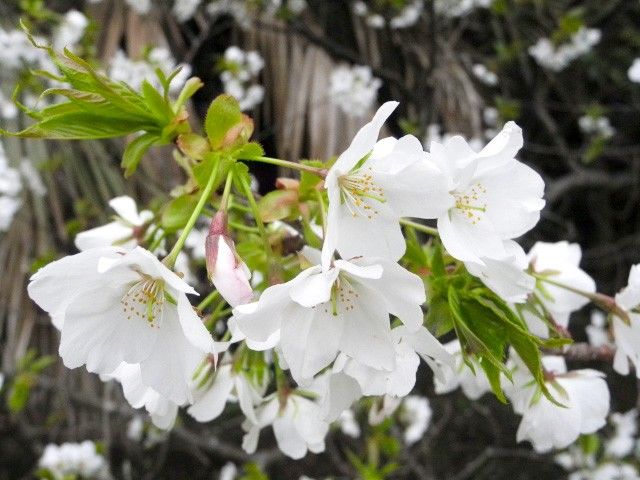
Ōshima-zakura flowers, large and white, have spectacular presence.
In the Edo period, the capital became the center of what was known as “Edo horticulture,” when many cultivars of chrysanthemums (Aster), azaleas (Rhododendron), and other plants were developed. Sakura was no exception, and Edo horticulturalists used ōshima-zakura to create double-petaled cultivars like fugenzō (C. Sato-zakura group ‘Albo-rosea’) and ukon (C. Sato-zakura group ‘Grandiflora’), which are still popular today. But the best-known result of this activity may be somei yoshino (C. × yedoensis ‘Somei-yoshino’), which today almost everyone associates with hanami.
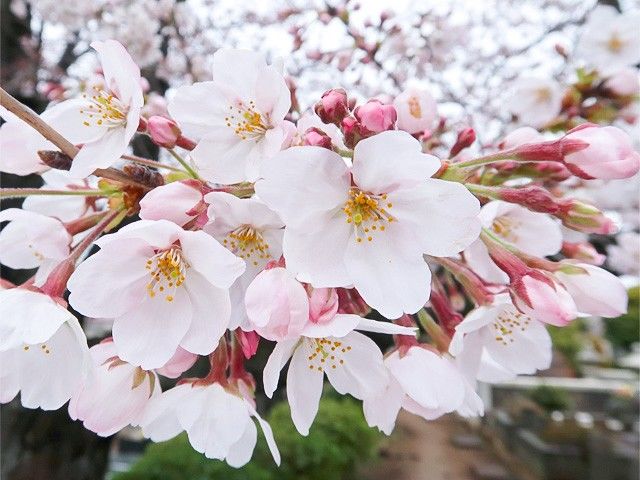 The pale pink flowers of somei yoshino have become a favorite of Japanese people.
The pale pink flowers of somei yoshino have become a favorite of Japanese people.
Somei yoshino, called yoshino-zakura at the time, got its start in the mid- to late nineteenth century in the village of Somei in Edo. At the time, single-petaled sakura trees that grew to a height of over 10 meters were considered to be yama-zakura and gained the name yoshino-zakura in a nod to the Yoshino area where yama-zakura originated. There are no extant records concerning how the somei yoshino cultivar came into being, but DNA research indicates that the mother tree was edohigan and the father tree ōshima-zakura. Somei yoshino combined the best traits of both—bursting into pale pink blooms before leafing out, as with the edohigan, and quickly growing tall like the ōshima-zakura—and it soon became the favorite sakura of Edo-ites as the ideal tree for hanami.
In the Meiji period (1868–1912), when Japan rapidly modernized, this tree was planted extensively in public spaces such as parks and schools and along roadways all over the country. But it was different from the yama-zakura found in Yoshino and came to be called somei yoshino after around 1900, taking the name of the village where it was first produced. In English, somei yoshino is often called “Yoshino cherry,” but I believe that name should be reserved for yama-zakura. The most appropriate name for somei yoshino in English is “Tokyo cherry,” since it spread to all parts of Japan after Edo was renamed Tokyo.
Somei yoshino was indeed the ideal cultivar for the type of hanami that started in Edo. Widely propagated by grafting, somei yoshino grow tall in about 10 years, and one can readily see that they are ideal for flower viewing. Because they are grafts, somei yoshino are clones, so they bloom simultaneously and all produce the same shade of pale pink flowers. They draw people far and near, who eat and drink in groups in the open air under their spreading branches. And since somei yoshino have been planted so extensively, the Edo custom of sitting under the trees to admire their blossoms spread along with the trees. It’s fair to say that thanks to somei yoshino, hanami became a springtime activity that everyone could enjoy.
Still More Variety to Come
Hanami lends itself to various types of enjoyment—attending a boisterous party in a park, silently contemplating the flowers, or reveling in the sight of sakura on a mountain hike. Many wild species also offer pleasurable viewing, such as ōyama-zakura (Sargent’s cherry, C. sargentii) in the cold reaches of Hokkaidō, kanhi-zakura (bell-flowered cherry, C. campanulata) in subtropical Okinawa, and a newly discovered species, kumano-zakura (Kumano cherry, C. kumanoensis), which blooms in the south of the Kii Peninsula.
Somei yoshino is by no means the only cultivar we encounter. Other popular types include the shidare-zakura (weeping cherry, C. itosakura ’Pendula’), kawazu-zakura (C. × kanzakura ’Kawazu-zakura’), taihaku (C. Satozakura Group ’Taihaku’), and others. Knowing the provenance and history of all the sakura growing in Japan can make the hanami experience all the more enjoyable.
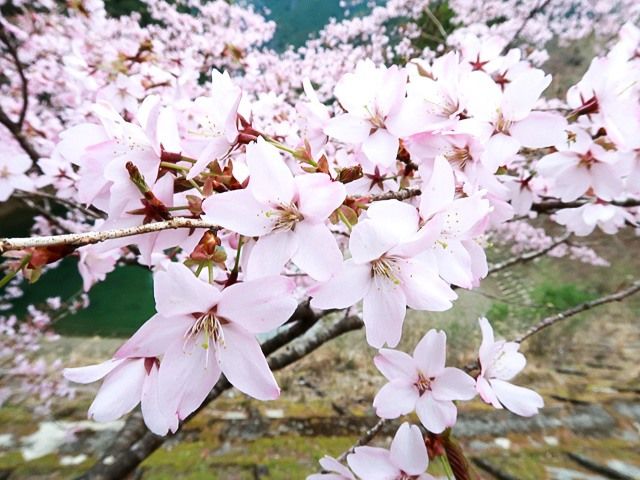 Kumano-zakura, a species newly discovered in 2018, will surely be planted more
Kumano-zakura, a species newly discovered in 2018, will surely be planted more
(Originally published in Japanese. Banner photo: Hanami crowds at Ueno Park in Tokyo. © Aflo. All other photos courtesy of the author.)